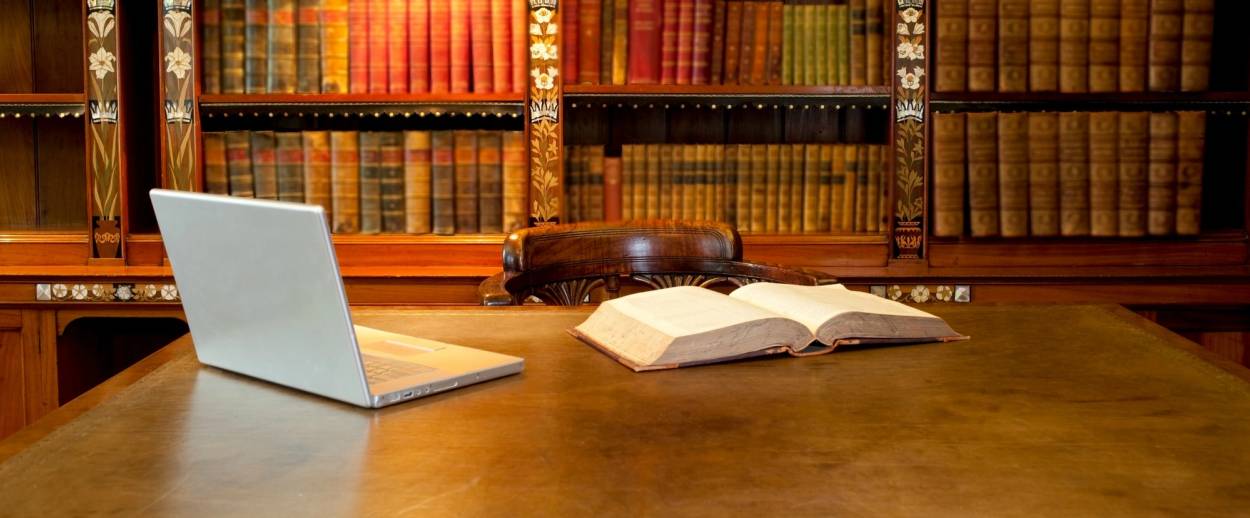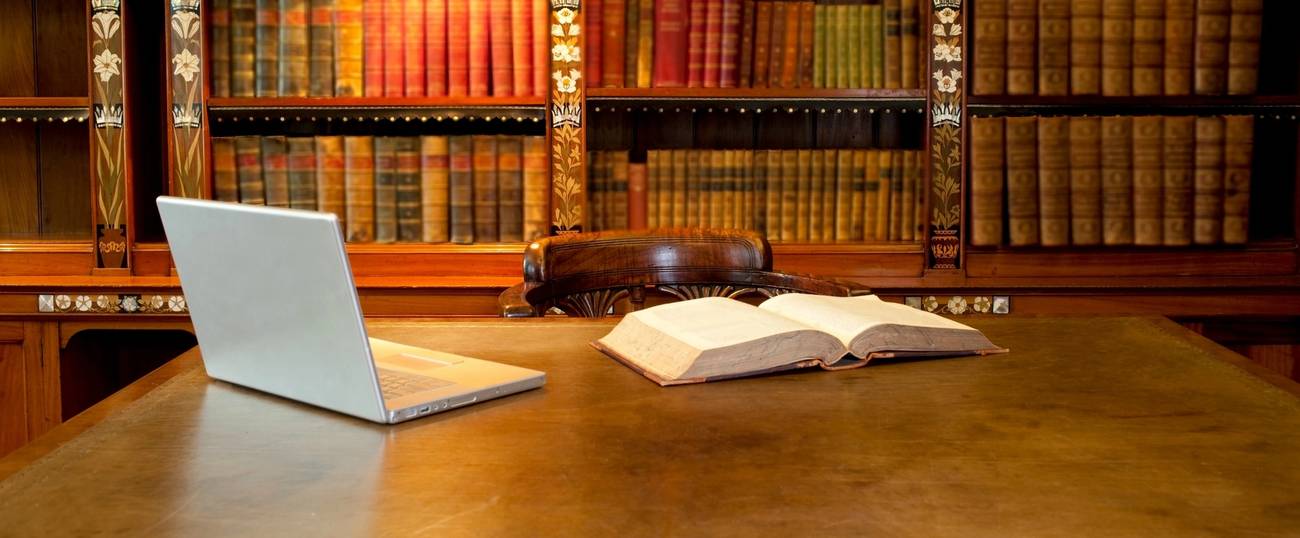Think Google Killed the Library? Think Again
As more scholars and students turn to digital sources, libraries and archives are discovering a new purpose and new audiences




One of the most striking changes I’ve seen in students over the last twenty-five years of teaching at UCLA is that they often make it to their final year without having set foot in the main campus library. When students admit during office hours that they don’t know where the Young Research Library is, I must confess that I still feel a bit of sadness mixed with consternation. The library, after all, is the grand citadel of learning for the university. How could students avoid it longer than a week, no less fail to know its whereabouts after three or four years?
Then I remind myself that students today are no less serious or studious than preceding generations. It’s just that they are able to access almost all the material they need for research projects from their computers in the comfort of their dorm rooms. Their generation is the first wave of beneficiaries of the digital revolution in which our very idea of knowledge—no longer consigned to the physical book in the bricks-and-mortar library—has been transformed.
For better or worse, this is the world we live in. As libraries, archives, and the great catalyst itself, Google, digitize millions of pages of content every year, we are hurtling toward the state of “open access,” in which all available sources of knowledge that have been digitized are accessible to anyone. We may lament this development as a departure from the ways of old. We may struggle to find a business model to monetize this vast repository of knowledge. But it is soon to be upon us.
And the news is not all bad. Exciting new possibilities abound, especially to reach wider and more diverse audiences. I am thinking about this a great deal in the new job I’ve just begun, as president and CEO of the Center for Jewish History (CJH) in New York. The Center is comprised of five distinguished partners: YIVO, the Leo Baeck Institute, the American Jewish Historical Society, Yeshiva University Museum, and the American Sephardi Federation. The collections of each, which together constitute the largest archival repository relating to modern Jewish history outside of Israel, are in various stages of digitization. When completed, the combined assets of the partners will be open and available for research and study. I can’t help but think and get excited about the great potential we’ll have to educate—to reveal the full riches and varieties of Jewish culture and to combat the lingering scourge of antisemitism. We’ll be able to extend the reach of the combined Center/partner collections far beyond New York City, to the West Coast, Europe, Asia, and the Middle East.
But won’t digitization spell the end of the bricks-and-mortar institution as we know it? This is the understandable fear of archivists, librarians, scholars, and antiquarians who cherish the precious rare volume housed in the bowels of venerable old buildings. There are several ways to respond this concern. First, we have to acknowledge that the design of books has constantly changed over time, assuming varied forms from papyri to tablets to parchment to paper manuscripts to bound volumes to Kindle versions today. Perhaps more compelling is the fact that most scholars will always prefer to hold an original book or manuscript rather than view it on screen. This is both because of the tactile high that practicing scholars experience when holding rare books and archival sources and because of the problem of verisimilitude that arises with digital materials. For all of the exactitude of high-resolution scanning, we scholars feel closer to the living past when we have documents in our own hands.
For this reason, the rationale for the physical space of an archive or library such as the Center for Jewish History remains in place—as an indispensable home to professional researchers. Out of their work at the Center emerges important, often cutting-edge research that furnishes essential historical knowledge for future generations.
And there are other reasons why the physical edifice remains important. In the case of the CJH, thousands of visitors enter the building every year to make use of its facilities, some to reconstruct their family histories at the Ackman & Ziff Genealogical Institute and others to attend one of the many lectures, seminars, and exhibitions offered on a weekly basis. These public activities are not an unwanted detour from our main mission, but a key part of it. Our goal is to make historical knowledge as accessible and widespread as possible to ever larger audiences. History is, after all, the connective tissue that links one Jewish generation to its predecessors. We at the Center play an important role in sustaining and nurturing the chain of historical transmission. At the same time, learning about Jewish history is not the exclusive preserve of Jews. Non-Jews can and do derive great benefit from learning about the physical survival, adaptive mechanism, intellectual and cultural achievements, and political behavior of Jews.
To be sure, in the heart of our 21st-century digital era, change is afoot. The function of the physical space is perforce shifting. We need to reconfigure our libraries and archives accordingly, to serve not just as repositories of books and documents, but also as conveners of people with a desire to meet and talk, as well as with an expanding array of technological interests and demands. In this new order, the physical space and digital media are not a zero sum proposition, but rather vital complements. This new paradigm toward which we are making our way has been called “bricks and click,” as illustrated recently by online retail giant Amazon’s purchase of bricks-and-mortar Whole Foods. So too in the case of the Center for Jewish History, a compelling and well-utilized physical space is not at odds with a wide digital footprint, but rather its constant companion and catalyst.
David N. Myers is the President and CEO of the Center for Jewish History. He is the author most recently of Jewish History: A Very Short Introduction (Oxford, 2017).
David N. Myers is a professor of Jewish history and the Robert N. Burr Department Chair of the UCLA History Department.